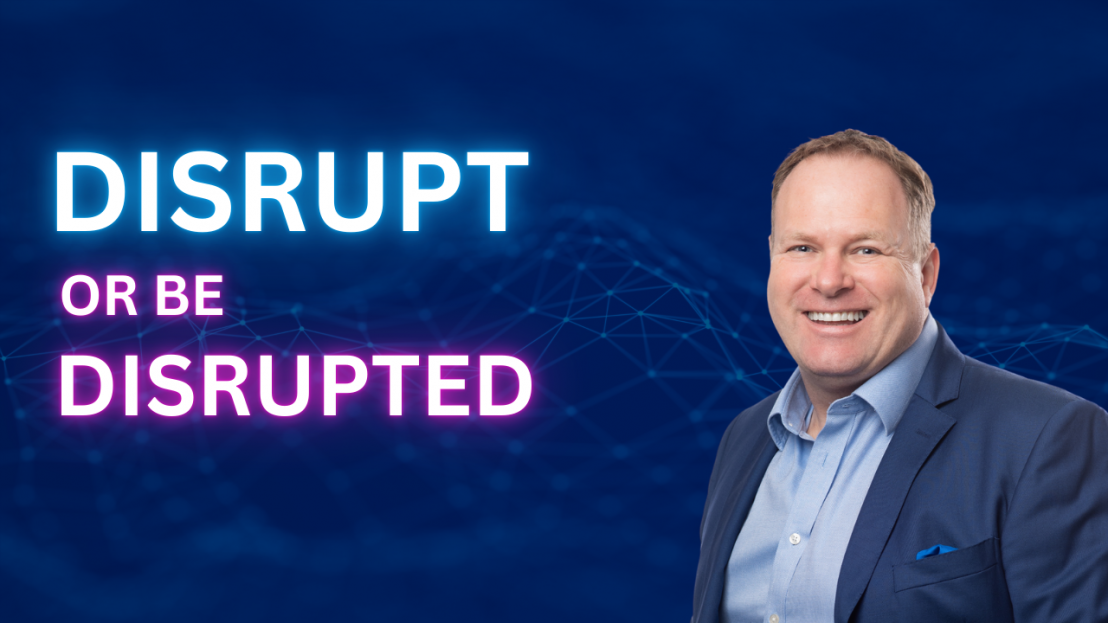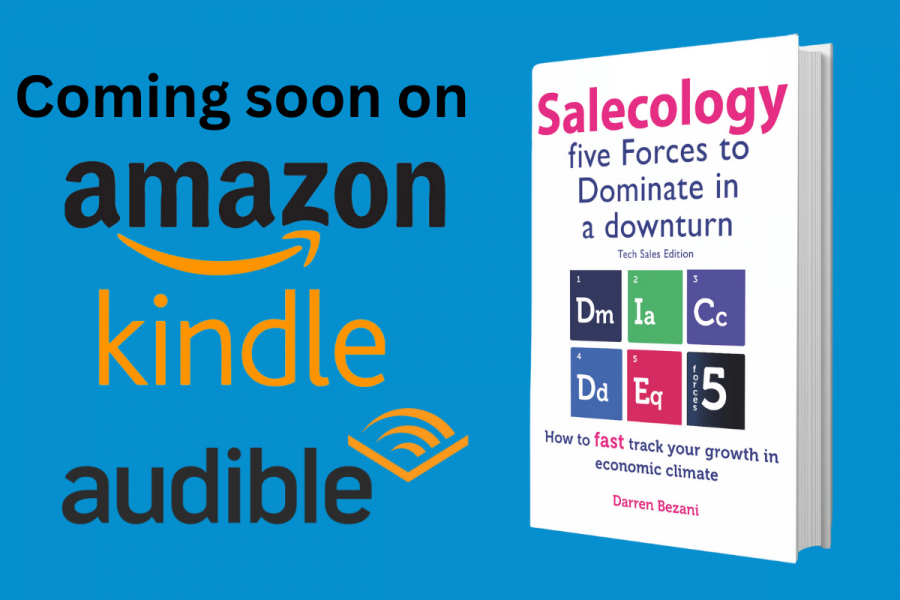
Embracing a Disruptive Mindset: The Key to Innovation in Tech Sales
n the rapidly evolving tech landscape, maintaining the status quo is no longer an option. For those on the front lines of sales and product development, a Disruptive Mindset isn't just beneficial—it's essential. Drawing on insights from my upcoming book, Dominate in a Downturn, this article explores how adopting a disruptive approach can catalyse change and drive significant growth, even in challenging economic climates.
What Does It Mean to Be Disruptive?
A Disruptive Mindset goes beyond simply introducing new features or making incremental improvements. It’s about cultivating a culture of relentless innovation, where the goal is not just to meet current market demands but to anticipate future needs and shape the industry’s direction. In the tech world, where competition is fierce and customer expectations are constantly shifting, disruption is the key to staying ahead.
In Dominate in a Downturn, I delve deep into what it truly means to have a Disruptive Mindset. It’s about questioning long-held assumptions and daring to imagine and create something truly groundbreaking. It’s not about change for the sake of change; it’s about meaningful evolution that addresses unmet needs, taps into emerging trends, and offers unparalleled value.
The Catalyst for Change
At the heart of this audacious approach is the Disruptive Mindset. In a slow economy, this mindset isn’t just advantageous—it’s essential. Economic downturns, while challenging, present a unique canvas for those daring enough to paint a different picture. In Dominate in a Downturn, I explain how a Disruptive Mindset can help you reframe the narrative for your customers, prompting them to reevaluate their current solutions and consider new, innovative approaches.
When engaging with decision-makers, particularly during challenging times, it’s crucial to present ideas that aren’t just different but are also deeply relevant and timely. By anticipating market shifts and positioning yourself ahead of the curve, you can turn potential obstacles into opportunities, guiding your customers towards solutions they hadn’t yet considered.
Building a Culture of Disruption
To truly harness the power of a Disruptive Mindset, it must be embedded across the entire organisation. This isn’t just the responsibility of visionary leaders; it needs to permeate every level—from the product team to sales, marketing, and beyond. In Dominate in a Downturn, I offer detailed strategies on how to build and sustain this mindset within your organisation:
-
Foster Curiosity: Encourage your teams to constantly question the status quo. Create an environment where asking “Why?” and “What if?” is not just allowed but encouraged.
-
Celebrate Risk-Taking: Innovation often comes with risks, and it’s crucial to cultivate an environment where taking calculated risks is celebrated. Recognise and reward attempts at innovation, even if they don’t always succeed.
-
Continuous Learning: Equip your teams with the tools to think big. This might involve attending workshops on the latest technologies, engaging with industry pioneers, or setting aside time for brainstorming sessions. Always be learning and growing.
-
Look Beyond Your Industry: Engage with other industries, collaborate with startups, and attend conferences. Bringing in fresh perspectives can ignite new ideas and approaches within your own organisation.
Case Studies and Success Stories
Real-world examples highlight the power of a Disruptive Mindset in action:
-
Netflix: Originally a DVD rental service, Netflix’s pivot to streaming disrupted the entire entertainment industry. By anticipating the shift towards digital content consumption, Netflix positioned itself as a leader, leaving traditional rental companies struggling to adapt.
-
Apple: With the launch of the iPhone, Apple didn’t just create a new phone; they redefined what a mobile device could be, setting the standard for the industry and consistently staying ahead of competitors through relentless innovation.
-
Slack: Instead of just building another communication tool, Slack reimagined workplace communication. By focusing on user experience and integrating with other tools, Slack became indispensable to teams, disrupting traditional email-centric workflows.
These companies didn’t just survive through innovation—they redefined their markets and set new benchmarks for success. In Dominate in a Downturn, I explore these and other stories, providing a roadmap for how you can apply similar strategies to your own business, no matter the size.
Overcoming Challenges
Promoting a Disruptive Mindset isn’t without its challenges. Resistance to change is natural, and the fear of failure can be a significant barrier. In my book, I discuss how to overcome these hurdles and provide strategies to ensure that your efforts lead to tangible results:
-
Start Small: Introduce disruptive ideas gradually. Start with small projects or pilot programs that allow teams to experiment without overwhelming them.
-
Build Buy-In: Clearly communicate the benefits of disruption to all stakeholders. Show them how these changes can lead to tangible benefits like increased market share, customer loyalty, and innovation.
-
Maintain Momentum: Once you’ve started on the path of disruption, it’s important to keep the momentum going. Regularly revisit goals, celebrate wins, and adjust strategies as needed.
Conclusion
A Disruptive Mindset is more than just a strategy—it’s a way of thinking that can transform your business from a follower to a leader. By embedding this mindset across your organisation, you can navigate even the toughest economic climates and emerge stronger on the other side. For a deeper dive into how you can cultivate and implement this mindset, be sure to check out my upcoming book, Dominate in a Downturn.
Free Downloads and More Content:
FREE DOWNLOAD: Maximise your Sales Meetings
This booklet will share some hints and tips on how you can raise your game using Salecology’s 4 Personality Colours and how to maximise your sales meetings across each of the 4 stages of the sale, and get more yes’s!
Click on the image or here to download (No name or email details are required).
GET THE BOOK:
Dominate in a Downturn is coming out in the next few weeks. Register your details below to join our free training content and be informed as soon as it is out.
,


